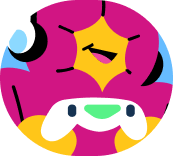Entity Relationship Types
Cards (6)
- What is an Entity? #1
- An entity in something worthy of capturing and storing data about e.g. students, orders, products, courses, customers
- Entities become tables in a relational database
- Relational databases store different entities in separate tables. Linking tables depends on the relationships between entities.
- What is an entity #2There are 3 types of (sometimes called degrees of) relationships:
- One to one
- One to many
- Many to many
- What is an entity #3Imagine a company has
- A table of products
- A table of customers
- A table of the orders the customers have made
What is the relationship between a customer and an order?- One customer can make multiple (many) orders
- But each order relates to a specific (one) customer
- So the relationship between customer and order is one to many
- What is an entity#4Now consider the relationship between a product and an order
- An order could have more than one (many) products on it
- A product could be on more than one (many) order
- So the relationship between order and product is many to many
One to one relationships also exist but are not very common in databases - Drawing Entity Relationship Diagrams
- Entity Relationship Diagrams (ERDs) are simple diagrams that represent the entities (tables) that will be in a database and the relationships between these entities
- The entities are drawn as boxes with the entity name in
- The relationships are drawn in as what is known as ‘crow’s feet notation’
- Resolving Many to Many Relationships
- Many to many relationships cannot be implemented into an actual database and need to be ‘resolved’
- This involves creating a new table known as a ‘link’ table that goes between the entities
- This new table links the entities that have the many to many relationships together
